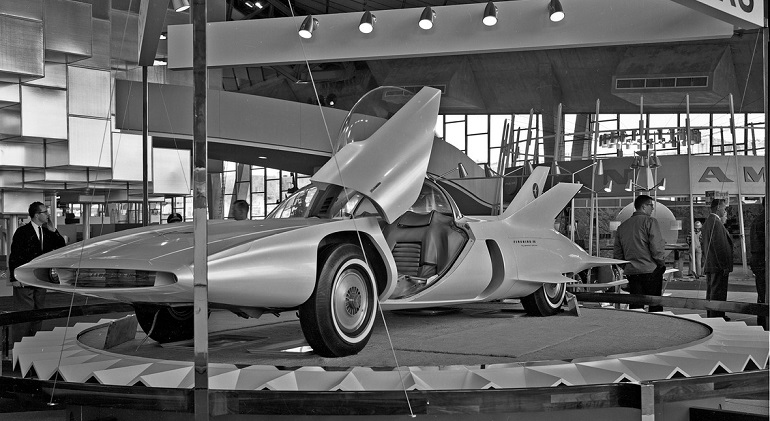

Self-driving cars are almost a century-old dream. Ever since the concept of autonomous vehicles was presented at the 1939 New York World Fair sponsored by General Motors, the industry’s greats have raced to be the first to manufacture a self-driving car. Now, thanks to the development of Artificial Intelligence (“AI”), this dream is ever closer to reality.
The US state of Nevada is (in)famous for its casinos, luxury resorts and the showbiz industry. However, Nevada is also known for being among the first to allow (limited) participation of self-driving cars on its roads in 2012, when in tandem with the tech-giant Google, it approved testing of autonomous vehicles in traffic. Naturally, the neighboring California also wanted a piece of the pie, which led to amendments of its Vehicle Code in the Fall of 2012, approving test rides of self-driving cars under the condition that the driver is capable of taking over immediate manual control at any time.
Nevertheless, such technological and AI marvels were overshadowed by a March 2018 incident which took place in Arizona when the first fatality from a self-driving car was recorded and led to benching ongoing test runs. As the result of the incident, various legal issues came to the fore, including the need for original legislation and discussions about liability for damages.
These topics were also tackled by the European Union (“EU”), which had optimistically projected that self-driving cars would be commercially available on the EU market as of 2020. While the global economic downturn caused by the COVID-19 pandemic may have bogged down the car industry, putting on hold the market breakthrough of self-driving cars, the occurrence of autonomous vehicles on roads is in the imminent future, leaving us wondering – what has the EU done to legally regulate self-driving cars?
It was because of the March 2018 Arizona incident that the EU became acutely aware of the need for an appropriate legal framework that would regulate autonomous vehicles. In a communication subsequently exchanged between the European Commission (“EC”) and other EU institutions titled “On the road to automated mobility: An EU strategy for mobility of the future” (“Communication”), it was noted that the transport industry was at a digital crossroads which could lead to new forms of transport, economic benefits, as well as improvements in sustainability and security, but that a comprehensive approach towards automated mobility was needed to define a clear EU agenda.
However, in the Communication, the EC nevertheless hailed existing EU legislation as, to a large extent, suitably prepared for the market entry of automated vehicles, seeing that liability issues were already addressed in various EU instruments. Particularly, the EC referred to the Motor Insurance Directive, which foresees a quick compensation of victims including where an automated vehicle was involved, as well as the Product Liability Directive, which allows for recourse against the manufacturer of the self-driving car if there was a malfunction or defect in the automated driving system.
However, in order to avoid potential abuses is this “liability shifting“ process, the EC proposed that autonomous vehicles should be equipped with data recorders which could clarify who was driving during an accident (the vehicle or the driver), whereas member states were left to regulate specific liability and compensation schemes in their national laws.
At present, Serbian legislation contains no notion of autonomous vehicles. Although the Serbian Traffic Safety Act (“TSA”) defines a motor vehicle as any vehicle powered by its own engine, intended and equipped for transport, duties imposed on drivers which require them not to decrease the vehicle’s stability nor to lose control of the vehicle imply that self-driving cars are not recognized by the TSA.
However, although self-driving cars may not be regarded as motor vehicles in the sense of the TSA, the occurrence of damage caused by such vehicles is subject to the general provisions of the Serbian Torts and Contracts Act (“CTA”) regulating liability for damage caused by dangerous items. The CTA prescribes that the holder (owner) of the dangerous item is objectively liable for damage caused by such item, regardless of fault, while case law is unequivocal – a vehicle in motion, including thus an automated vehicle, is a dangerous item. The CTA provides for liability waivers in certain cases, though. For instance, vehicle owners may be relieved from liability if they prove that the damage was caused by a third party operating the vehicle when the accident occurred, or if they prove that the damage resulted from a cause beyond the vehicle itself, whose effect could not have been anticipated, avoided or removed. Yet, whether and how would these exculpating circumstances apply to self-driving cars is all but uncertain.
Self-driving cars on the roads – Serbian roads included – lie ahead in the imminent future. Thus, it comes as no surprise that certain international agreements, such as the Vienna Convention on Road Traffic, were recently amended to “open doors” for the participation of such vehicles in traffic, nor is it surprising that a specialized United Nations commission is tasked with globally harmonizing legislation in this field. Serbia would be wise to employ a similarly proactive approach to keeping a lookout for the technological and legal novelties regarding autonomous cars, so that it may welcome these vehicles of the future with up-to-date laws and roads at the ready.
Author: Predrag Spasić and Suzana Dončić